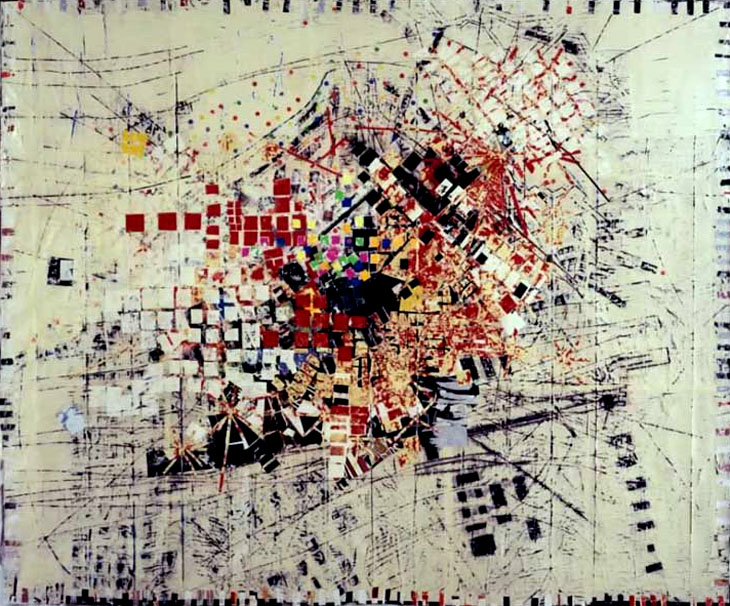
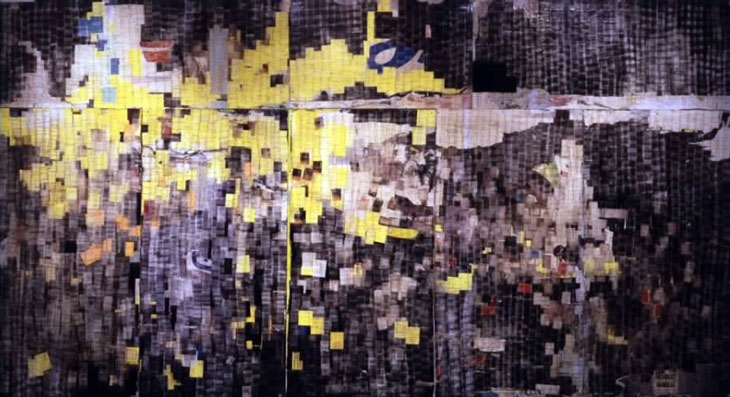
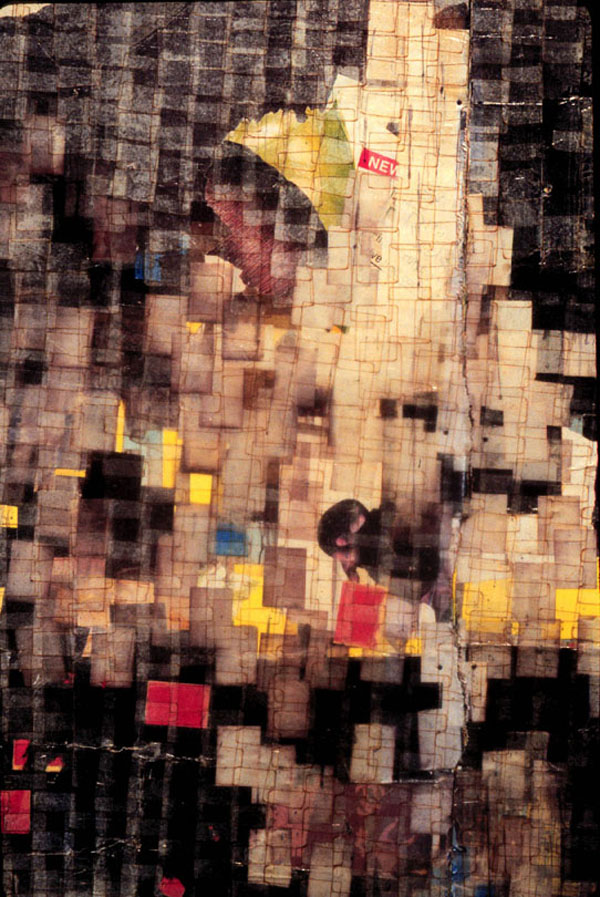
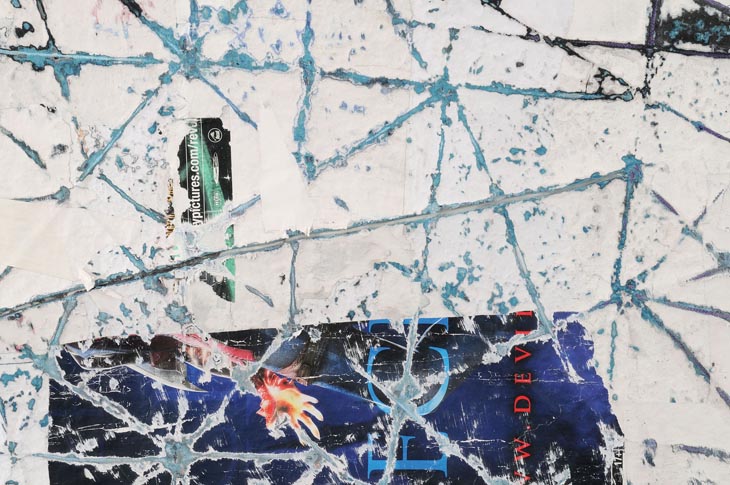
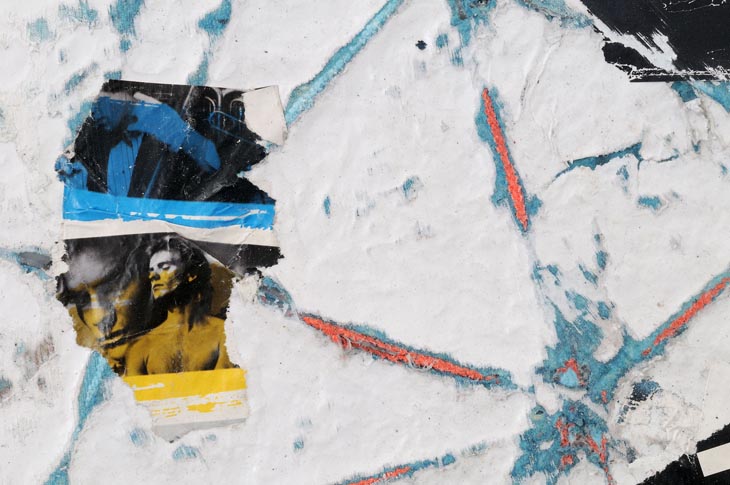
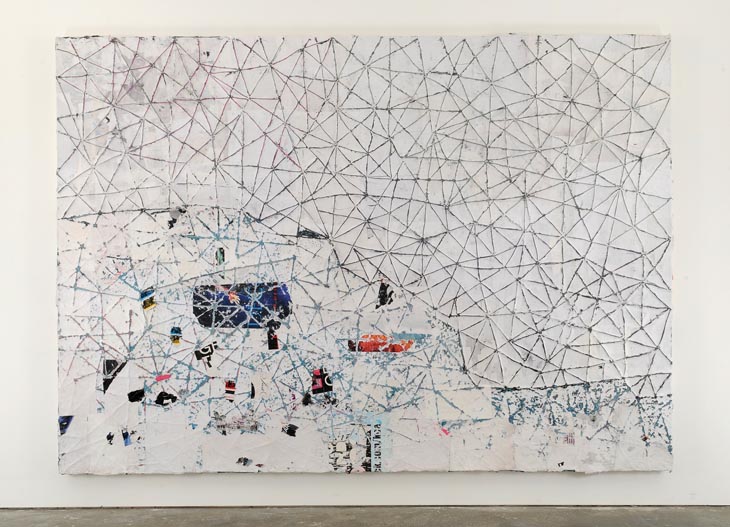
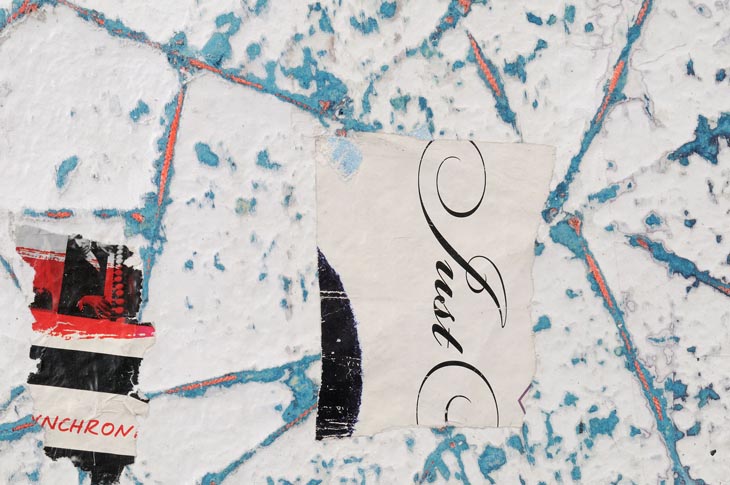
ARTIST:
Mark Bradford
Using collage and paint on paper, Mark Bradford’s Kryptonite possesses an organic quality in its grid-like composition. Its convoluted architecture and overlapping details radiate as a megalopolissprawl, a seething microcosm of activity. Often compared to Piet Mondrian, Bradford gives modernism’s vision of an ordered utopia a lethal reality check as hard-edged borders and harmonious planes are exchanged for independent non-defined forms engaging
in unruly turf-war. Evolving his surface as a highly textured topography, Bradford uses gesture and mark-making to encapsulate the dissonance and excitement of a metropolitan landscape. Mark Bradford’s abstractions unite high art and popular culture as unorthodox tableaux of unequivocal beauty. Working in both paint and collage, Bradford incorporates elements from his daily life into his canvases: remnants of found posters and billboards, graffitied stencils and logos, and hairdresser’s permanent endpapers he’s collected from his other profession as a stylist. In The Devil is Beating His Wife, Bradford consolidates all these materials into a pixelised eruption of cultural cross-referencing. Built up on plywood in sensuous layers ranging from silky and skin-like to oily and singed, Bradford offers abstraction with an urban flair that’s explosively contemporary. Mark Bradford’s abstractions unite high art and popular culture as unorthodox tableaux of unequivocal beauty. Working in both paint and collage, Bradford incorporates elements from daily life into his canvases such as remnants of found posters and billboards and hairdresser’s permanent endpapers. In White Painting, Bradford uses paper exclusively to replicate the effect of paint. Scratching and sanding through the layers to reveal strata of colours and embedded
images, his palimpsest surface draws connotations to both abstract expressionism and street art, recontextualising the sublime traditions of high art with an urban flair that’s explosively
contemporary.
in unruly turf-war. Evolving his surface as a highly textured topography, Bradford uses gesture and mark-making to encapsulate the dissonance and excitement of a metropolitan landscape. Mark Bradford’s abstractions unite high art and popular culture as unorthodox tableaux of unequivocal beauty. Working in both paint and collage, Bradford incorporates elements from his daily life into his canvases: remnants of found posters and billboards, graffitied stencils and logos, and hairdresser’s permanent endpapers he’s collected from his other profession as a stylist. In The Devil is Beating His Wife, Bradford consolidates all these materials into a pixelised eruption of cultural cross-referencing. Built up on plywood in sensuous layers ranging from silky and skin-like to oily and singed, Bradford offers abstraction with an urban flair that’s explosively contemporary. Mark Bradford’s abstractions unite high art and popular culture as unorthodox tableaux of unequivocal beauty. Working in both paint and collage, Bradford incorporates elements from daily life into his canvases such as remnants of found posters and billboards and hairdresser’s permanent endpapers. In White Painting, Bradford uses paper exclusively to replicate the effect of paint. Scratching and sanding through the layers to reveal strata of colours and embedded
images, his palimpsest surface draws connotations to both abstract expressionism and street art, recontextualising the sublime traditions of high art with an urban flair that’s explosively
contemporary.






